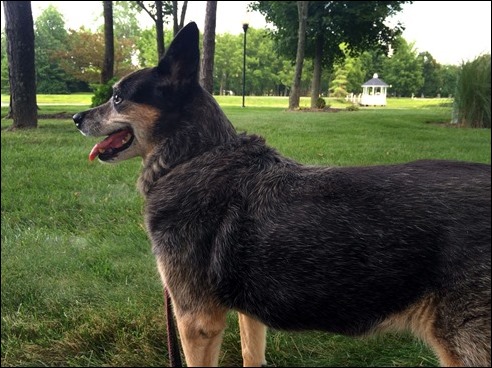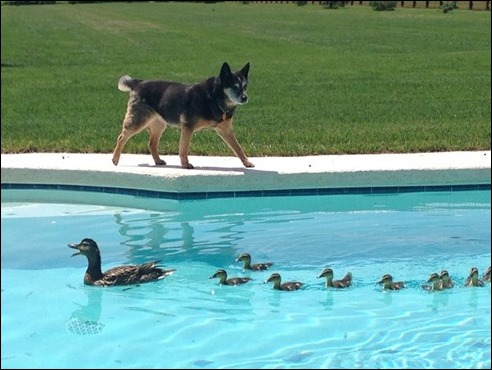A frequent question: What about an Australian Cattle Dog?
Posted By RichC on August 6, 2014
I recently chimed on a forum question regarding dogs for sailboats and a member wanting input on an Australian Cattle Dog. Since we’ve had Tootsie for 16 years now (below), I felt qualified to offer an opinion … besides I wanted an excuse to archive her recent photo.
Our “beast” has been a wonderful addition to our household, although she is far more at home running on acres of space “outside” than cooped up or cuddled in someone’s lap; do not expected them to sit quietly in a house (that’s a non-starter for our dog and this breed). My advice is that cattle dogs need plenty of space and need an exercise routine beyond what can be offered by liveaboard sailors.
In Tootsies’ early years she love playing with the kids … although she would be far too rough for children under 5 or 6. The instinct is to “herd” and unfortunately nip at the heels of children … aka: Red and Blue Heeler.
…the Australian Cattle Dog has a high level of energy, a quick intelligence, and an independent streak. It responds well to structured training, particularly if it is interesting and challenging. It was originally bred to herd by biting, and is known to nip running children. – LINK
She has been high energy until recently and extraordinarily healthy compared to other dogs that I’ve had or have been familiar with. She “was” a proficient hunter and protective of her territory bringing a variety of critters back to the doorstep including mink and even an old gray coyote (I’m thankful it was old and weak … or already dead)! Her thick coat is a nightmare to brush out and she sheds more than most for at least half a year. She’s extremely tough and durable for her size (45 lbs) and loves wrestling around and playing hard, but now at 16 she is suffering from stiff joints and a weak hips (hip displasia). Another hereditary issue for heelers is deafness which Tootsie has now been for a few years, although its not readily noticeable. We’re also aware that her eyesight has declined; initially I thought it was cataracts. Unfortunately not (could have been corrected with surgery) and instead is Progressive Rod/Cone Degeneration (PRCD). Hopeful she’ll maintain “ok” eyesight the rest of her life.
One of the pluses (or minuses) is that she has “calmed down” in her later years. She enjoys just sitting at my feet and being close … the slow down was timed well now that Taylor and Katelyn have moved away. All in all, she is a great family pet. Loving and loyal, healthy and independent, energetic and fun … and she’s a good looking dog too!


Comments